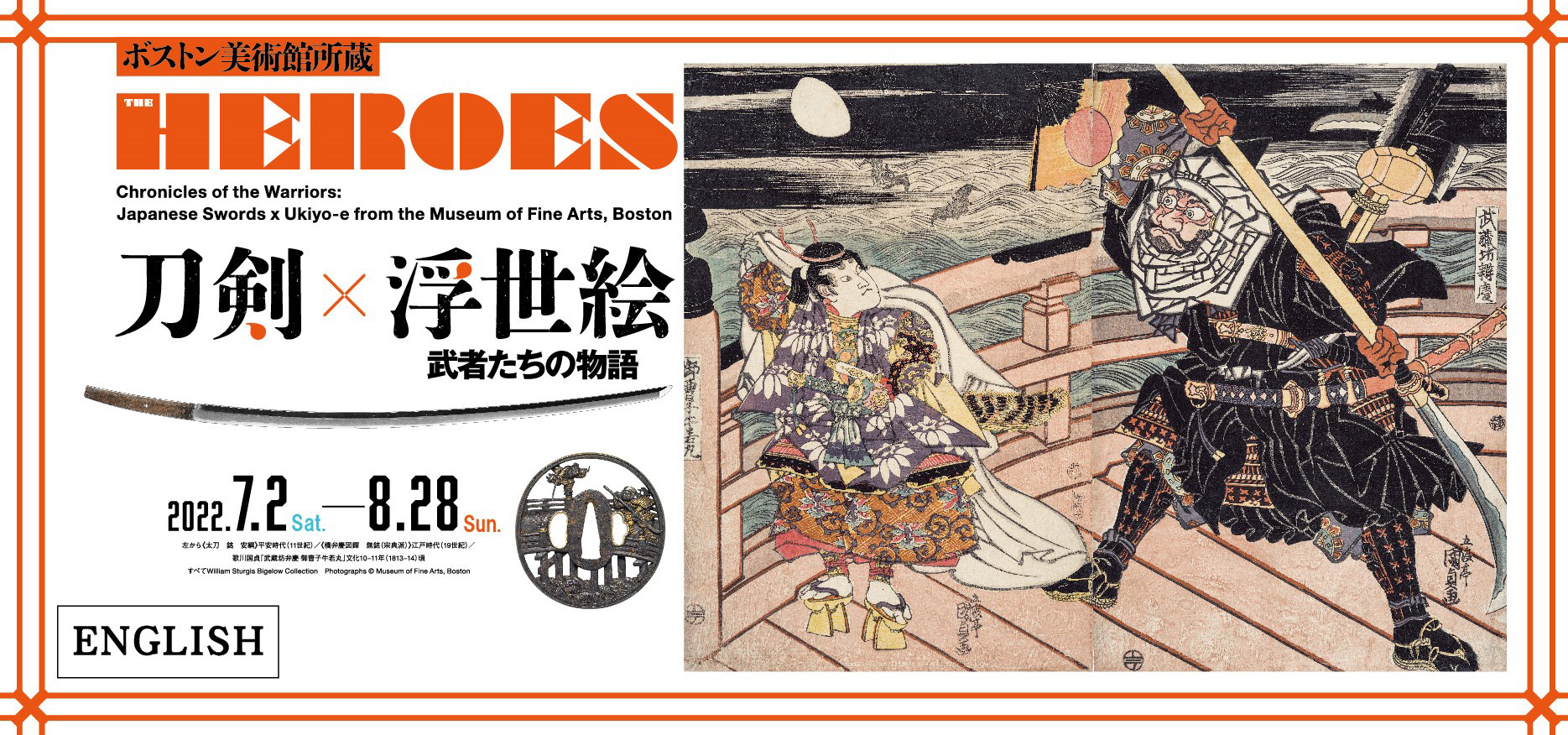
Highlights of Exhibition
- All the musha-e on display for the very first time in Japan! 118 works from the MFA collection will introduce musha-e, depicting popular heroes of Edo.
- The popularity of musha-e can also be seen in tsuba sword mountings! 27 tsuba sword mountings that have musha-e related imagery will be exhibited together with the ukiyo-e prints.
- The world-class collection of 20 famous swords from the MFA collection are coming back to their country of origin.
- Only the Shizuoka venue will showcase swords that are National Treasures or Important Cultural Properties! A special display of 6 famous swords from collections in Japan.
- Visual story-telling! Four-frame musha-e cartoons will appear at the exhibition.
The Age of the Gods
The tales of the age of the gods were passed down through the Kojiki (712) and the Nihon shoki (720), as well as in various provincial Fudoki (Gazetteers recording oral traditions). They not only tell stories of gods such as Amaterasu ōmikami and Susanoo no mikoto, but also relate to various war feats of emperors and provincial nobles. Although not many stories from this period were depicted in Musha-e, from the 18th century, when warrior picture books appeared, they became popular and were also depicted on framed votive wooden plaques in Shinto shrines.
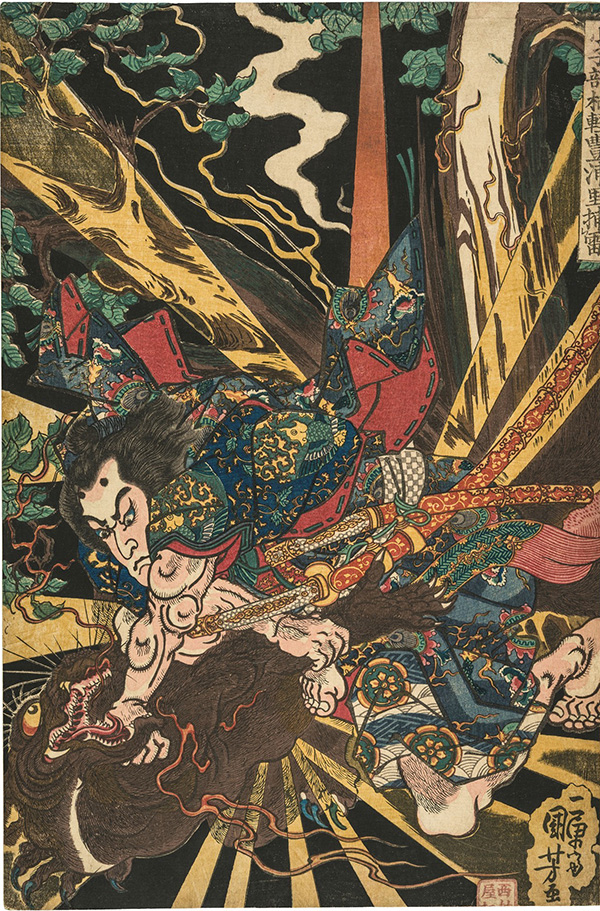
The Heian Period
During the Heian period, two warrior clans, the Seiwa Genji (Minamoto) and the Kanmu Heishi (Taira), held great power. Both had various legends of valour, and Minamoto no Yorimitsu, the third-generation head of the Seiwa Genji clan, in particular has been depicted in heroic stories such as “The Earth Spider,” “The Shutendōji of Ōeyama” and “Kidōmaru at Ichiharano”. Yorimitsu’s legendary retainers Watanabe no Tsuna, Sakata no Kintoki (who was known as Kintarō in his youth), Usui no Sadamitsu, and Urabe no Suetake were known as the Shitennō (Elite Four) and make their own appearances individually in various warrior stories.
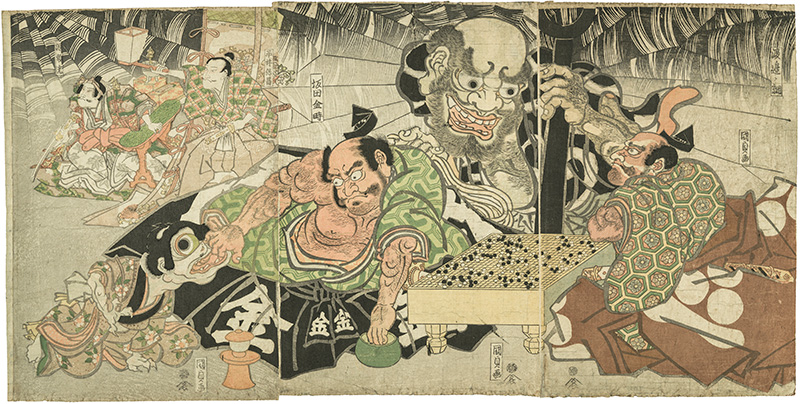
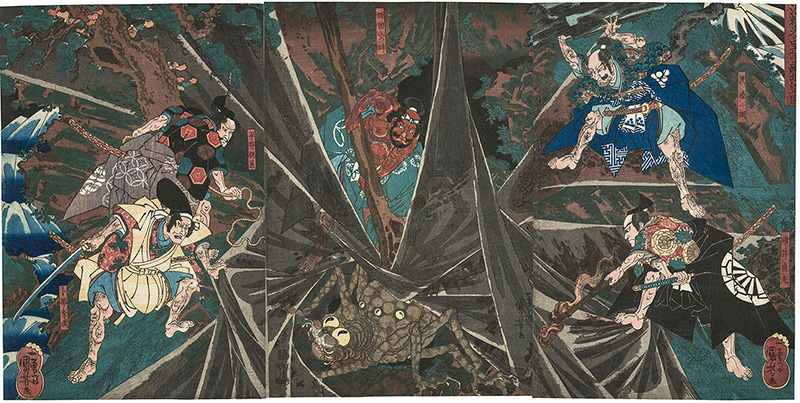
Genpei Wars
At the end of the Heian period, the Taira clan was led to prosperity by Taira no Kiyomori. However, in 1180 (Jishō 4), Minamoto no Yoritomo raised an army, marking the beginning of many battles between the Minamoto and Taira clans until 1185 (Bunji 1), when the Taira were defeated in the Battle of Dannoura. The tales of these battles are recounted in war epics such as the Heike monogatari and Genpei jōsuiki, and these stories make up a large proportion of musha-e subjects. There are numerous stories about individual military commanders in both the Taira and Minamoto clans, but Minamoto no Yoshitsune in particular was a popular hero during the Edo period. He appears in many musha-e starting from the time of his youth, when he was known as Ushiwakamaru, to his tragic end when he was pursued by his elder brother Yoritomo.
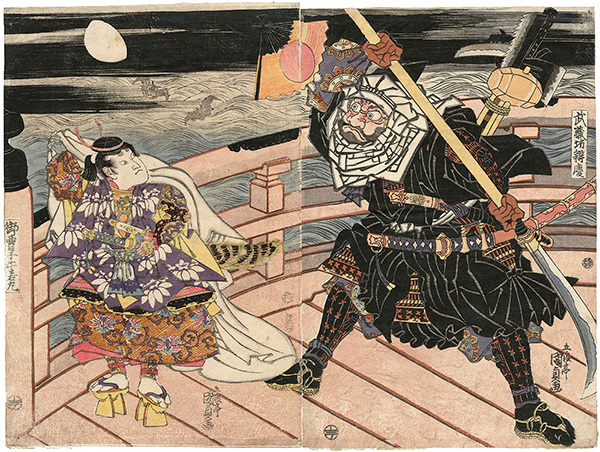
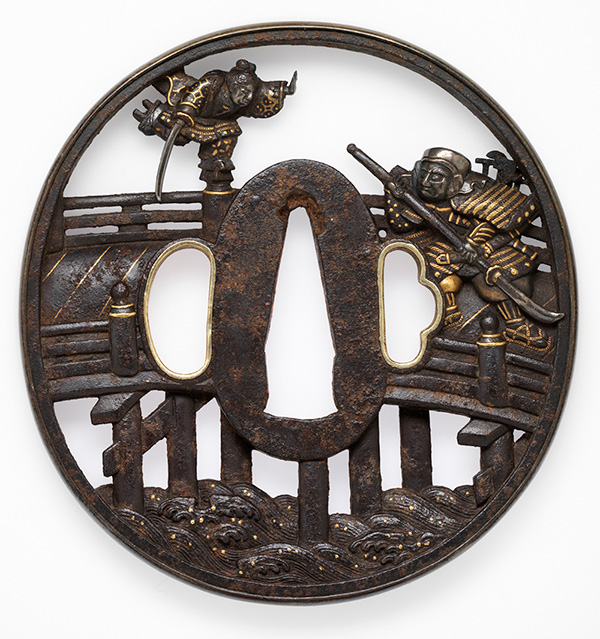
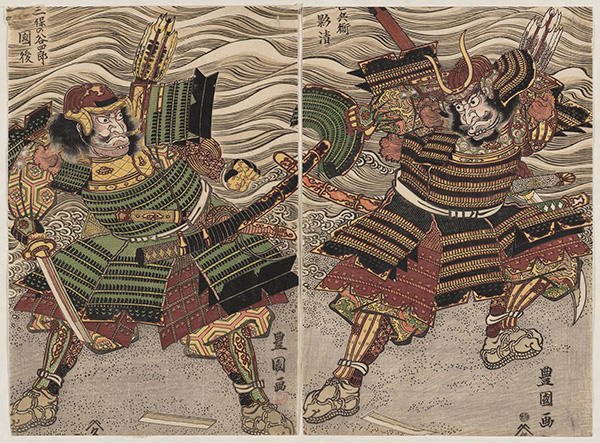


The Kamakura Period
Soga monogatari is the tale of two brothers, Soga no Jūrō Sukenari and Soga no Gorō Tokimune, who, after enduring hardship for 18 years, finally avenge their father’s murder by killing Kudō Suketsune at an evening hunting organised by Minamoto no Yoritomo in the foothills of Mount Fuji. In the Edo period, this story was a popular subject not only for reading but also for ukiyo-e prints and kabuki theatre. This hunting is known as the “The Hunt at Mount Fuji,” with Nitan no Shirō Tadatsune as a boar hunter, which was a typical composition of the scene.
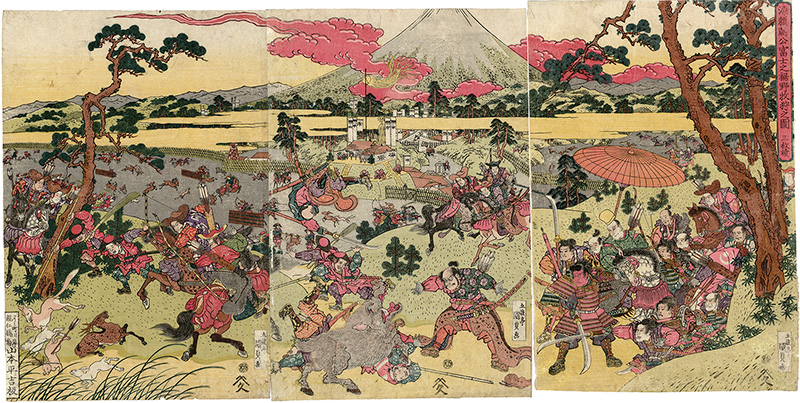
The Taiheiki
The Taiheiki is a war epic recounting battles, mostly covering the end of the Kamakura shogunate and subsequent state of war between the Northern and Southern Courts that lasted. It was popular not only in picture scrolls and illustrated printed editions, but also in the Edo period as a storytelling called “Taiheiki yomi”. In ukiyo-e, the exploits of loyal retainers of the Southern Court, such as Kusunoki Masashige, his son Kusunoki Masatsura, and Nitta Yoshisada, were commonly illustrated as subjects. One of the more curious legends that has been depicted since the early days of ukiyo-e involves Kusunoki Masashige, who was killed at the Battle of Minatogawa but returns as a ghost to attack Ōmori Hikoshichi.
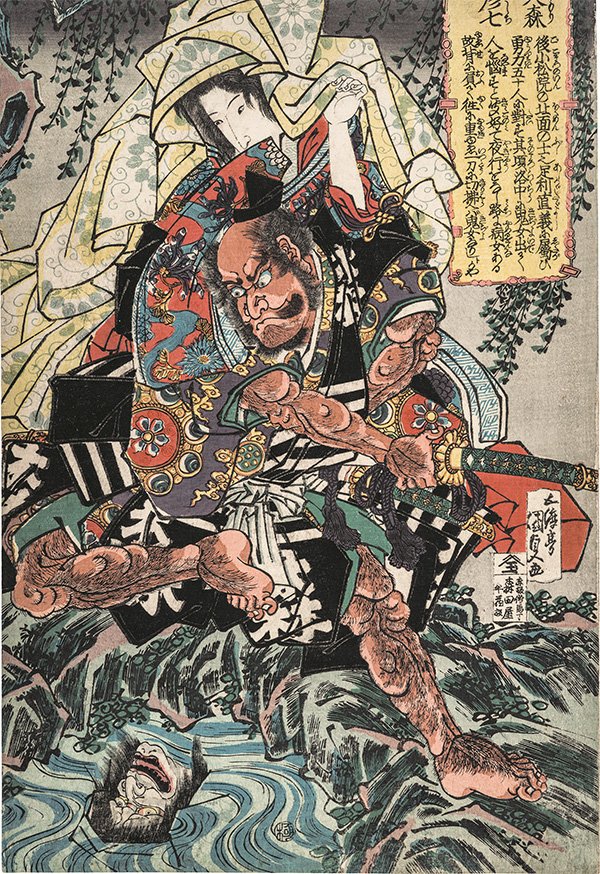
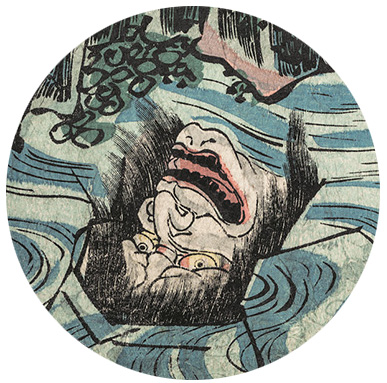
The Battle of Kawanakajima
Kawanakajima is located in the northeastern part of present-day Nagano Prefecture, in the area where the Sai and Chikuma rivers meet. During the 12 years between 1533 (Tenmon 22) and 1564 (Eiroku 7), the warlords Uesugi Kenshin of Echigo Province and Takeda Shingen of Kai Province fought 5 battles there. Ukiyo-e prints have been produced depicting the death of Takeda Shingen's military strategist Yamamoto Kansuke, as well as a series depicting various Kai and Echigo warlords, but the hand-to-hand combat between Kenshin and Shingen has been the most widely depicted scene since the beginning of ukiyo-e.
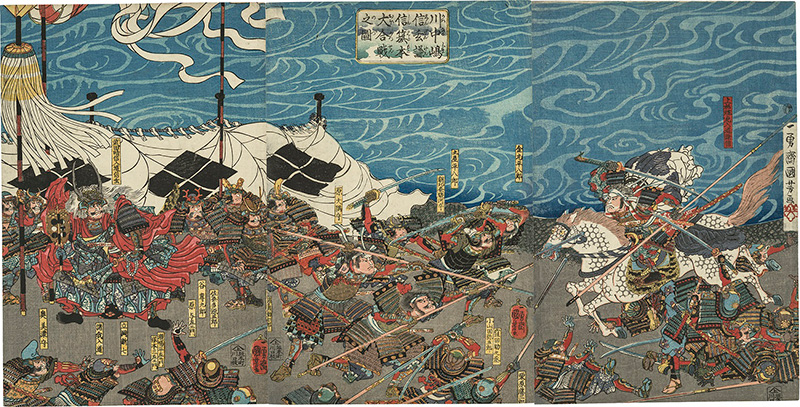


Heroes in Novels
In the late Edo period, lengthy historical novels called yomihon began to be published, and these stories of adventure proved to be highly popular. In ukiyo-e, the print series Tsūzoku Suikoden by Utagawa Kuniyoshi, depicting heroes from a famous Chinese novel, became a huge hit. After that, musha-e of the 1830s and early 1840s (the Tenpō era) went beyond portraying historical war epics such as Heike monogatari and Taiheiki, and began to include fictional characters from novels.
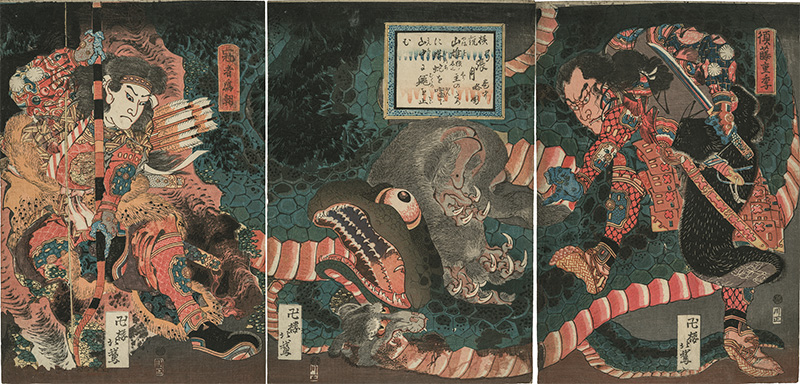
Notable Swords from the Museum of Fine Arts, Boston
The exhibition features 20 carefully selected swords from around 600 blades in the MFA’s collection, which holds the highest quality and quantity of Japanese swords outside Japan. From Yasutsuna of Hōki no Kuni, dating back to the mid-Heian period, to the Edo period's Horikawa Kunihiro, Inoue Shinkai and Suishinshi Masahide, this exhibition provides an excellent overview of Japanese swords through the works of exceptional swordsmiths.










